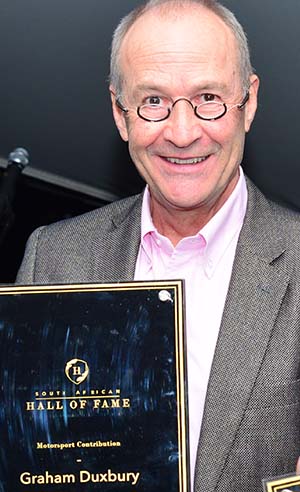“Fernando is faster than you …” Ferrari’s infamous coded order delivered to Felipe Massa by race engineer Rob Smedley during the 2010 German Grand Prix was a clear indication that the Italian team was fully committed to Fernando Alonso, its “number one” driver.
 By Graham Duxbury
By Graham Duxbury
Massa was leading the race, but Alonso was expected to do the winning for Maranello.
Ferrari has a long history of support for a recognised team leader. Who can forget the 2002 Austrian GP when Rubens Barrichello was ordered to slow down by Ferrari to allow teammate Michael Schumacher through to win?
Some drivers are happy to accept their subservient role within the team. Eddie Irvine, Michael Schumacher’s teammate at Ferrari between 1996 and 1999, believes he could hold his own against most of his Formula One rivals, except Schumacher. “Michael was in another world,” he says.
When Schumacher was side-lined by a broken leg following his crash at the British GP in 1999, Irvine stepped up as team leader and won the next two races. Although he lost the title fight to Mika Hakkinen by just two points, Irvine helped Ferrari win the Constructors Championship, the marque’s first in 16 years.
Irvine demonstrated the unique qualities every successful number two driver needs. These are acceptance of the vitally important support role they must play, and confidence to be able to take on the mantle of team leader when the call comes.
After Daniil Kvyat was demoted from Red Bull to the sister Toro Rosso team in 2016 to make way for Max Verstappen his confidence was visibly shaken and he was subsequently dropped from Toro Rosso too. However, a spell as Ferrari’s development driver restored his confidence, resulting in significantly improved performances this year on his return to Toro Rosso.
Hopefully, Red Bull will successfully manage Alex Albon’s promotion to the senior team. While much will be expected of a racer with only 12 F1 starts to his name, it would be disastrous if Alex’s promising career is stunted by unrealistic expectations.
A driver who subverts his ego, accepts his support role and develops a reputation as “a safe pair of hands” will help engender a harmonious atmosphere within the team – for the benefit of all.
Can we expect teams in the modern turbo-hybrid era to learn from history when it comes to obviating the hazards of having two number one drivers? Or, as former Ferrari president Luca di Montezemolo said; “two roosters in the same henhouse”.
Fans will remember the explosive relationship between Alain Prost and Ayrton Senna at McLaren in the late 1980s and – more recently – the antagonistic nature of the Hamilton/Nico Rosberg pairing at Mercedes in 2016.
What about Nigel Mansell and Nelson Piquet at Williams in 1986? A lack of logical oversight by the team in their intense and vicious battle for world championship points allowed Alain Prost to claim the World Champion title for McLaren by the smallest of margins.
Similarly, in 2007, a bitter battle ensued between McLaren’s Hamilton and Alonso. While the Spaniard was the team’s number one ‘on paper’, he was challenged by Hamilton who was out to prove his rookie status was no impediment to winning.
Without strict team guidelines, the pair fought aggressively – and senselessly – until season’s end. In the final reckoning both scored 109 points and both won four races. But Ferrari driver Kimi Raikkonen took the coveted championship title by a scant one-point margin.
Defining driver roles and establishing a hierarchy is seldom easy. In a team where drivers are joint leaders, as is the current case at Mercedes, Valtteri Bottas will always be under pressure to beat Lewis Hamilton, his arguably more talented team mate.
Valtteri, who has become increasingly prone to mistakes as he tries to outperform Lewis, also acknowledges that uncertainties about his future have ratcheted up the pressure and dented his confidence.
Over at Ferrari there is a classic number one/two line-up. However, it’s well known that newcomer Charles Leclerc is out to prove himself against Sebastian Vettel, a four-time world champion. The mistakes that this increasingly mismanaged situation encourages are becoming evident.
Both Bottas and Leclerc should accept number two driver status (if only for the duration of their current contracts), adjust their approach accordingly and provide support for their team leaders. Like Barichello, Irvine, Massa and many other talented, confident number two drivers, their time to shine will arrive.
Graham Duxbury is a former professional racing driver, celebrated SA champion and acclaimed motorsport administrator and commentator. A South African Hall of Fame inductee, he made history in 1984 by winning the famous Daytona 24-hour sports car race in the US in an all-South African team. Today, he heads Duxbury Networking.
